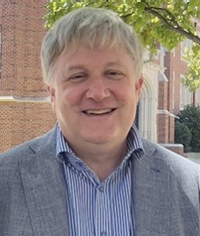2025 AOCS Annual Meeting & Expo.
Surfactants and Detergents
Adjustments to the hydrophilic-lipophilic deviation (HLD) equation for salt type

Brian Grady, PhD (he/him/his)
Douglas and Hilda Bourne Chair in Chemical Engineering
Institute for Applied Surfactant Research, University of Oklahoma
Norman, Oklahoma, United States- ZC
Zahra Chaleshtari
Scientist
Institute for Applied Surfactant Research, University of Oklahoma, United States - SA
Steven Adamy
Associate Research Fellow
Church & Dwight Co., Inc., United States - RZ
Robert Zehr
Senior Research Chemist
Church & Dwight Co., Inc., United States - ML
Marlee Leonard
Undergraduate Research Assistant
Institute for Applied Surfactant Research, University of Oklahoma, United States - JH
Jeff H. Harwell, PhD
Professor Emeritus
Institute for Applied Surfactant Research, University of Oklahoma
NOrman, Oklahoma, United States - DS
Dave A. Sabatini
Professor Emeritus
Institute for Applied Surfactant Research, University of Oklahoma
Norman, Oklahoma, United States
Presenting Author(s)
Co-Author(s)
The hydrophilic-lipophilic difference (HLD) equation is being used extensively for designing oil-in-water based surfactant systems to maximize oil solubility and minimize oil-water interfacial tension. However, the equation was developed for and almost always presumes that the salt is sodium chloride. The work described in this paper extends the equation to other monovalent cations (Li, K) and divalent anions (CO3). The equation was adjusted for molecular weight and the number of cations in the salt. For anionic surfactants, the Hofmeister series successfully qualitatively predicts that the salt concentration to reach HLD=0 scales with Li >Na >K, i.e. the surfactant with lithium requires more salt for the water to reach the hydrophobicity required. Although the exact salt concentration depends on the anionic surfactant headgroup, the difference in optimal salinity between two cations appears to not be dependent on headgroup. Also, CO3 reduces the activity of the cation as compared to Cl. For narrow-range alcohol ethoxylates, there is little difference between Na and K; while Li requires more salt for a given increase in hydrocarbon number of carbons to reach HLD=0. A broad-range ethoxylate gives inconsistent results, which we attribute to the finite solubility of some surfactant components in the oil.

.png)